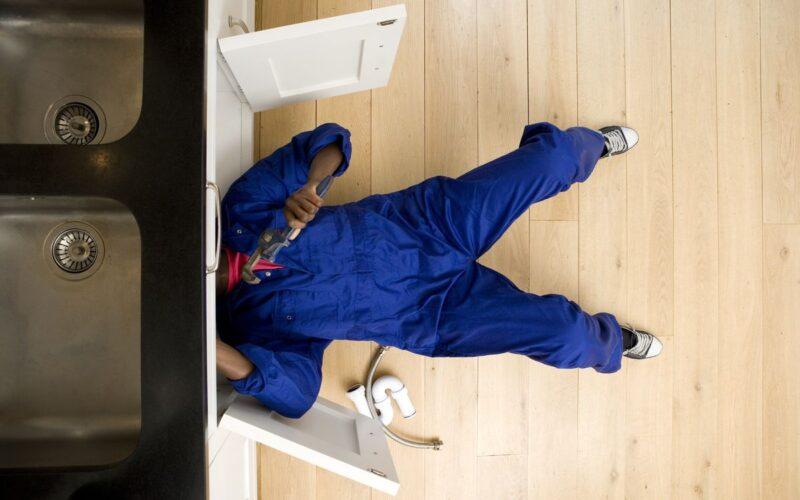
Leaky pipes are a homeowner’s worst nightmare. Not only do they cause water damage, but they can also lead to expensive repairs. The good news is that there are several ways to treat a leak, and the best method depends on the severity of the leak. Read on to learn about four methods for treating a leak once and for all.
Use a Sealant
Using a sealant as a method of treating a leak can be beneficial in patching up small holes or cracks in areas like iron, water tanks, and pipelines. Sealing the leak takes place by application of the sealant on the outer surface to allow it to form a strong bond that works as an effective barrier against the leakage. It is generally done using a brush or spray and can also be used to avoid any further damage from occurring. Sealants not only tend to fix minor damages but also prevent major damage from happening again. They are one of the most cost-effective methods for treating a leak and thus makes them one of the best solutions in cases such sealants shouldn’t be overlooked when looking for solutions that provide lasting relief for leaks.
– What is a Sealant?
A sealant is a material that is used to block or prevent liquids and gasses from passing through spaces in parts or mechanisms. Commonly used as a method to plug leaks, sealants are typically applied around mechanical components, such as pipe joints, gaskets and valves, to form an airtight and watertight barrier. There are several different types of sealants available, from general purpose compounds to specialized industrial solutions. Choosing the right type of sealant for the job will ensure effective sealing performance and help treat the leak once and for all.
– How Does it Work?
Proactive leak prevention is an essential step for keeping your property safe, dry, and free of costly repairs. When it comes to fixing a pesky plumbing problem, there are several methods available to you to take care of the issue once and for all. Depending on the nature of the problem, the course of action will vary, with some situations needing professional assistance and others able to be fixed by a DIY enthusiast. The four main methods available are often applied in combination after an initial assessment is made by an inspector or reliable specialist. These tactics involve plugging large holes with sealants and epoxy putties as well as tackling external damage through metal or rubber clamps. Additional interventions involve locating any hidden water sources and replacing faulty fittings, ensuring that the workplace installation is properly insulated for maximum efficiency. Once these steps have been followed, your property should be leak-free!
Fix the Source of the Leak
Finding and fixing the source of a leak is one of the most effective ways to permanently resolve a plumbing issue. Fortunately, there are four reliable ways to diagnose and eventually address an issue: check for visible signs of damage, inspect seals around windows or doors, use a thermal imaging camera to locate the source, and pressure test your pipes. Locating and properly treating the source of any water-related problem should be your first step in order to prevent further issues from occurring. Making sure that you have taken all necessary steps will ensure that you can feel confident your home is safe from unnecessary harm due to leaks.
– Finding the Leak
Finding the leak in a plumbing system can be a complex process. Sometimes, it’s a matter of simply listening for the tell-tale signs of running water. In other cases, it can take more thorough detective work to locate the source of the problem. There are four key methods for finding and treating a leak once and for all – measuring water pressure, searching for weak spots in pipes or joints, performing an ultrasound scan and using leak detection dye. Doing these steps correctly is important in order to identify the source of the leak before it causes major damage.
– Fixing the Leak
Fixing a leak is no easy feat, so knowing the right method to use can save a lot of time and frustration. Here are four methods for treating a leak once and for all: repairing, patching, replacing and severing. Repairs involve removing the source material surrounding the leak that needs repair while patching repairs cracks or holes in the area that may lead to further damage. Replacement requires swapping out any broken parts or pieces before sealing them up again. The last method, severing, requires capping off leaking pipes permanently for situations where other solutions will not suffice. Each method has different steps and considerations when it comes to finding permanent solutions for leaks, so be sure to evaluate the situation before taking action.
Call a Professional
If you need to address a leak in your home, one of the most successful methods is to call a professional. Professionals have access to specialized tools and experience that allow them to quickly identify the source of the leak and any potential underlying damage. A qualified professional will also provide useful advice for preventing future leaks, so that you can be confident that your problem will be resolved once and for all. With this method, homeowners can rest assured knowing that their leak has been addressed quickly and effectively.
– Services Plumbers Provide
Plumbers provide a variety of repiping services to address leaks in water, gas and sewer lines. Customers can choose from four different methods for treating a leak once and for all, from spot repair to repiping an entire section of the home. A plumber can help determine which option is best for each individual situation and how long it will take to permanently fix the problem. For example, a pex repipe job involves replacing existing pipes with brand new ones, helping homeowners achieve optimal results that will last for years.
Treating a leak is no easy feat, but with the right methods and knowledge, homeowners can effectively address the problem once and for all. From using sealants to calling a professional plumber, there are many solutions available to stop pesky plumbing problems in their tracks. Finding the source of the leak and addressing it properly is key to preventing future damage, so make sure you take the necessary steps to ensure that your home is safe from leaks.





